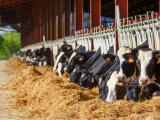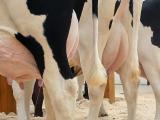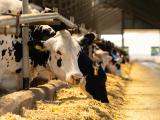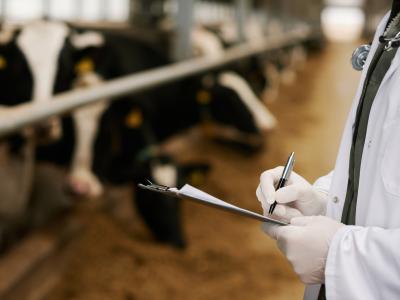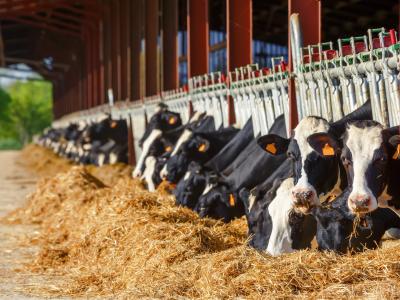Editor's note: This story was revised on Apr 20, 2013, to correct the number of H5N1 cases that occurred in the same province as H7N9 cases and to correct the time from onset of illness to death in H7N9 cases.
Apr 19, 2013 (CIDRAP News) – One of the odd mysteries posed by the H7N9 influenza virus emerging in China is why most of the patients are on the older side—a fact that stands in sharp contrast to the pattern seen with that other deadly crossover avian virus, H5N1.
An analysis by Nicholas Kelley, PhD, at the University of Minnesota's Center for Infectious Disease Research and Policy (CIDRAP), publisher of CIDRAP News, shows that the median age of H7N9 case-patients thus far is 61.5 years, with a range of 2 to 89 years.
For comparison, Kelley examined the ages of the 45 H5N1 case-patients in China over the past 10 years and found a median age of only 27. And when he looked only at H5N1 cases in the same provinces where H7N9 cases have turned up, the median age was even younger: 24.
The European Centre for Disease Prevention and Control (ECDC), in an epidemiological update released today, but based on cases as of yesterday, put the median age of H7N9 patients even higher: 64, with a range of 4 to 89.
A related puzzle is the gender balance, or rather imbalance, among H7N9 cases. The ECDC report says just 25 of 82 patients with available information have been female. For H5N1 the gender balance has been much more even. Looking at H5N1 cases in the same provinces as the H7N9 cases, Kelley found that six were female and six were male.
So far, authorities on influenza generally seem stumped by these differences, much as they are stumped on exactly how the virus is getting into humans. The suspected source is poultry, but Chinese authorities reported this week that only 39 of about 48,000 samples from more than 1,000 poultry markets, farms, and other sites were found to contain the virus. Further, they said about 40% of H7N9 patients had no clear history of exposure to poultry.
Timothy Uyeki, MD, MPH, a flu expert at the US Centers for Disease Control and Prevention, said this week that any suggested reasons for the age distribution would be only speculation, because there's just not enough information to offer any answers.
Likewise, experts at the ECDC didn't have any answers. "They said we just don't have information at this point, so prefer not to speculate," said Romit Jain, an ECDC communication officer.
Yuelong Shu, PhD, director of the Chinese National Influenza Center in Beijing, suggested this week that older people may have more exposure to H7N9 because of greater contact with poultry, compared with younger people.
"Usually the retired older people take care of the family food in China," and thus are more likely to visit poultry markets, he commented by e-mail. "But the exact reason [for the age distribution] we really don't know."
Michael T. Osterholm, PhD, MPH, director of CIDRAP, ticked off several variables that might be considered in the search for an explanation of the different age and gender distributions but said none of them offers an answer at this point.
For example, is there a difference between H5N1 and H7N9 in how cases are detected, such that younger people infected with H7N9 would tend to be missed? "If you look at H5N1 cases just from the same provinces where we see H7N9 cases, it would be hard to hypothesize what the major differences would be in detection and treatment of cases," Osterholm said.
Another possibility, he said, would be age-related differences in underlying conditions between H5N1 and H7N9 case-patients. Again, "If you look at the same provinces, it's unclear what that would be," he said.
Underlying immunologic factors in older people who are exposed to H7N9 might be another thing to consider. "That could be the case if the illnesses [with H5N1 and H7N9] were very different," Osterholm said. "But we don't have any evidence of that here. The descriptions of the illness are very similar to what we see with H5N1."
For example, he added that the median time from onset to death in fatal H7N9 cases is 11 days—very similar to the time in H5N1 cases.
As for exposure to poultry at live-bird markets or elsewhere, Osterholm said that that risk factor clearly operates with H5N1 so doesn't explain the different demographics of the two viruses.
Another possibility might be some inherent difference between the two viruses, he said. But he ruled that out too: "It's never just the virus. It's the virus-human relationship."
"I think this [age distribution] is important information," Osterholm said. "Mother Nature is trying to tell us something here. But I don't think any of us has a clue. We can't explain it by the host, the mechanism of transmission, or the virus."
The age and gender patterns are just two of multiple H7N9 mysteries waiting to be cleared up. Another is why more than 80 H7N9 cases have popped up in just a few weeks in China, versus just 45 H5N1 cases in the country in about 10 years.
Still another puzzle is why the virus seems to cause little or no sickness in birds but makes humans seriously ill.
"We don't know what we're dealing with here, because this is the first time we've seen a virus causing serious illness in humans but having low pathogenicity in birds," Osterholm said.
See also:
Apr 19 ECDC epidemiological update

